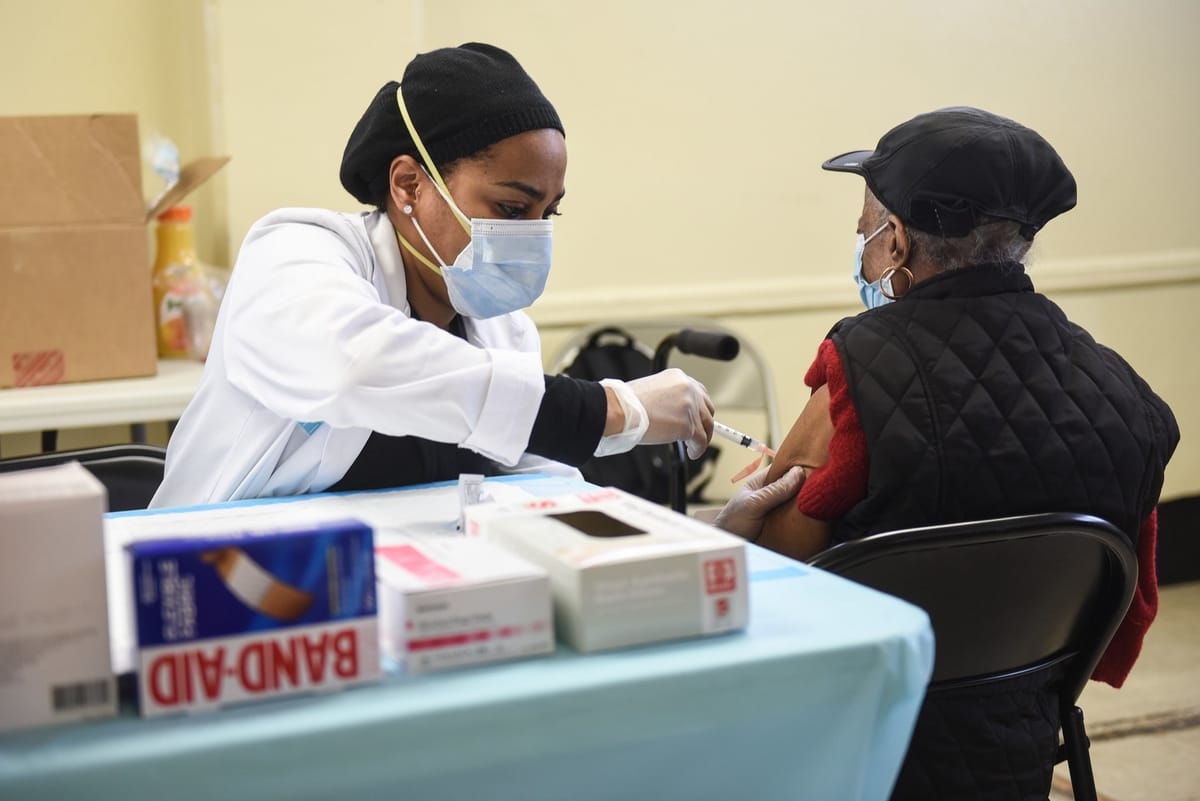Opinion: The Racial Cost of NYC’s COVID-19 Vaccination Rollout


By Brian Benjamin, Roxanne Persaud, and Kitaw Demissie, MD, PhD
New York City is one of the most racially diverse cities in the world – it’s what makes our city incomparable to all others – we’re a complex, beautiful fabric that is bursting at the seams with unique culture, lived experiences and perspectives. Our diversity is our greatest strength – it is both the reason that we are the trailblazers of change, and the first to speak against injustice.
New Yorkers have fought for change with a renewed fervor in the past year – marching for equality and accountability, working hard to elect leadership that reflects the diversity of our communities, and fighting for equal representation and fair treatment. Today, however, data continues to show one big barrier to equality: our vaccine distribution does not match our diversity.
Publicly available data shows the neighborhoods that were hit the hardest by the pandemic are the same communities that have the lowest rates of vaccination. It’s not surprising that the Upper East Side, one of the wealthiest neighborhoods in the city, already has 25% of the community vaccinated, while neighborhoods like Canarsie and Brownsville are at a meager 5%. How have we allowed communities of color to be the last to be vaccinated?
Communities of color in New York City have been hit the hardest in a multitude of ways during the pandemic – facing the highest infection and death rates, the biggest barriers to healthcare, and carrying the brunt of the economic burden. Moreover, long-standing inequalities in social determinants of health subject our community to live in crowded homes with less ability to physically distance in workplaces and while commuting, increasing their chances of contracting the virus.
The truth is this – we should have been prepared. People of color live with the truth that we must work twice as hard for half as much, and while the effort to elect leaders who resemble our communities and will stand up for our rights has never been stronger, we’ve been overlooked in catastrophic ways during the pandemic.
In a society whose fundamental principle lies on equality of opportunities, our community is experiencing a major pandemic of racial-ethnic disparities in health. The impact of COVID-19 and inequitable vaccine distribution are magnifying glasses of the larger, systemic health disparities devastating our communities. The persistence of implicit bias throughout our health care systems, residential segregation that creates barriers to access, and government policies that have contracted rather than expanded support, are all major causes of racial disparities in health. Elimination of segregation is likely to reduce the income, unemployment and educational gap between communities of varied socio-economic backgrounds.
Communities of color have long been overlooked by the city government. In 2019, less than 5% of city contracts went to minority and women-owned businesses (MWBEs), despite the city’s population that same year being 29% Hispanic or Latino, and more than 24% Black.
While it may not be obvious, the Office of the Comptroller can play a special role in preventing racial and socio-economic barriers to care and representation. A comptroller can measure need proactively, increasing inter-agency communication so that data discovered in the rollout of government programs can inform the way we approach new issues.
In addressing the long-term issue at hand, the comptroller can support our public hospitals, which have been the backbone of minority health care, ensuring they are well-funded and receive the full support of the Department of Health, which is well-positioned with necessary data and resources to support communities of color.
In light of the appalling racial disparity in our vaccine distribution, there are measures we must implement now. The City Council, after a year of this pandemic and months knowing a vaccine was on the way, has only just this past week stepped up to improve access through the implementation of a single vaccine booking system to make access to appointments standardized for all. However, the problem won’t just be solved by a better website. We need more aggressive outreach to communities that are falling behind to help correct the disproportionality of vaccine distribution. If we have data showing that communities of color are not being vaccinated at the same rates as white communities, why are we not opening more vaccination centers in the communities that need it and focusing our outreach efforts there?
It’s obvious that our city’s vaccination rollout has been haphazard at best, and if getting an appointment for a vaccination relies on being able to refresh a website continuously and utilize personal connections to cut the line, then the system is clearly designed to leave our minority populations in the dark.
The bottom line is that we need equity in our recovery, and equity is impossible if we do not identify and understand the current problems we are dealing with. Equal treatment begins with equal representation and equal consideration by our leaders, and in the final stretch of the pandemic, we cannot allow our minority communities to get left behind.
Brian Benjamin and Roxanne Persaud are New York State Senators, Benjamin is a candidate for New York City Comptroller. Kitaw Demissie, MD, PhD is a Dean and Professor at SUNY Downstate Health Sciences University.




